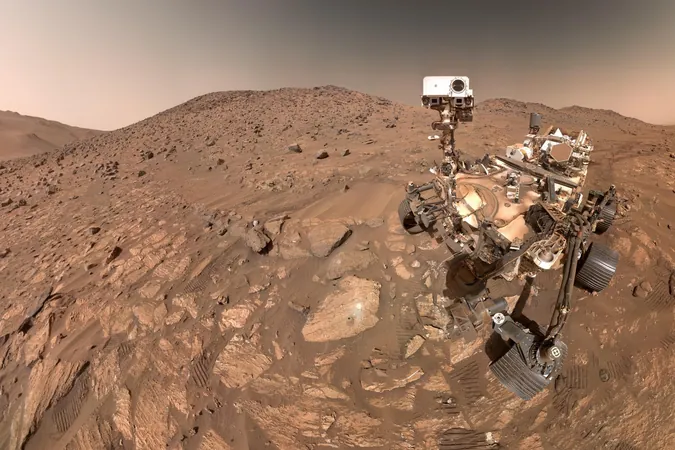
Mars Rovers Perseverance and Curiosity: Battling Harsh Conditions and Pushing Boundaries
2024-11-12
Author: Amelia
Introduction
NASA's beloved Mars rovers, Perseverance and Curiosity, have faced significant obstacles as they traverse the unforgiving terrain of the Red Planet. With missions aimed at uncovering the secrets of Mars, these robotic explorers are struggling more than ever to gather crucial data after years of exploration.
Perseverance's Mission and Challenges
Currently engaged in its fifth scientific campaign, Perseverance is on a daunting journey to the rim of Jezero Crater, which once harbored a massive lake billions of years ago. The rover has been experiencing severe challenges, often taking double the time to maneuver across this rugged Martian landscape. For a rover designed to navigate extreme conditions, this rough patch reveals the unexpected difficulties posed by the environment.
Perseverance's mission is clear: it aims to analyze ancient hydrothermal activity at Jezero's western rim, a key area for understanding whether life ever existed on Mars. Climbing nearly 1,000 feet (approximately 300 meters) with slopes reaching up to 23 degrees, this mission demands every ounce of the rover's capabilities. Despite being operational on Mars for almost four years now, these latest challenges have proven to be the most intense yet.
"I’m dealing with some steep and slippery terrain," Perseverance shared through an update. “Thanks to my team and autonomous navigation system, I’m working hard to overcome the obstacles in my path.” The loose dust and sand at the rim have created a deceptive layer, leading to unforeseen difficulties as the rover navigates forward.
Mission Planners' Solutions
In attempting to ease Perseverance's journey, mission planners have explored various solutions, including instructing the rover to drive in reverse. This unconventional method maintains traction better and allows for safer navigation in hazardous areas. Interestingly, the rover is now being directed toward less slippery zones at the northern edge, where larger rocks are more prevalent, hopefully reducing the risk of slippage.
Curiosity's Ongoing Struggles
Meanwhile, hundreds of miles away, Curiosity—Perseverance's predecessor—is also grappling with its own set of challenges. Recently, NASA reported that Curiosity only managed to cover half the distance it aimed for. Sustaining damage to its suspension system, the rover found itself precariously positioned with one wheel in a trough and another on a rock.
Curiosity is currently exploring Gediz Vallis, a channel near Mount Sharp believed to have once held liquid water. The mission team is now pivoting towards a remote sensing strategy while they strategize a way for the rover to safely change course toward its exit. The channel's complex geology is not only revealing clues about Mars' historical climate but also providing insight into how water may have ebbed and flowed on the planet.
Understanding Gediz Vallis
In light of these challenges, team members are continuing to study Gediz Vallis to piece together its origin—whether it was shaped by ancient rivers, fierce winds, or dry avalanches. This research is crucial to understanding Mars' transition of water from a robust presence to its current dry state, as it suggests a more episodic history of water availability instead of a steady decline.
Conclusion
As these two rovers continue their pioneering work on Mars, they remind us of the grit necessary to uncover the mysteries of our universe, revealing just how tenacious robotic explorers can be in the face of adversity. As advances in technology and engineering continue to evolve, one can only wonder how Perseverance and Curiosity will overcome their current predicaments, charting new paths and making groundbreaking discoveries on the Martian surface! Stay tuned, as these rovers may soon unveil secrets that could change our understanding of life beyond Earth!









 Brasil (PT)
Brasil (PT)
 Canada (EN)
Canada (EN)
 Chile (ES)
Chile (ES)
 España (ES)
España (ES)
 France (FR)
France (FR)
 Hong Kong (EN)
Hong Kong (EN)
 Italia (IT)
Italia (IT)
 日本 (JA)
日本 (JA)
 Magyarország (HU)
Magyarország (HU)
 Norge (NO)
Norge (NO)
 Polska (PL)
Polska (PL)
 Schweiz (DE)
Schweiz (DE)
 Singapore (EN)
Singapore (EN)
 Sverige (SV)
Sverige (SV)
 Suomi (FI)
Suomi (FI)
 Türkiye (TR)
Türkiye (TR)